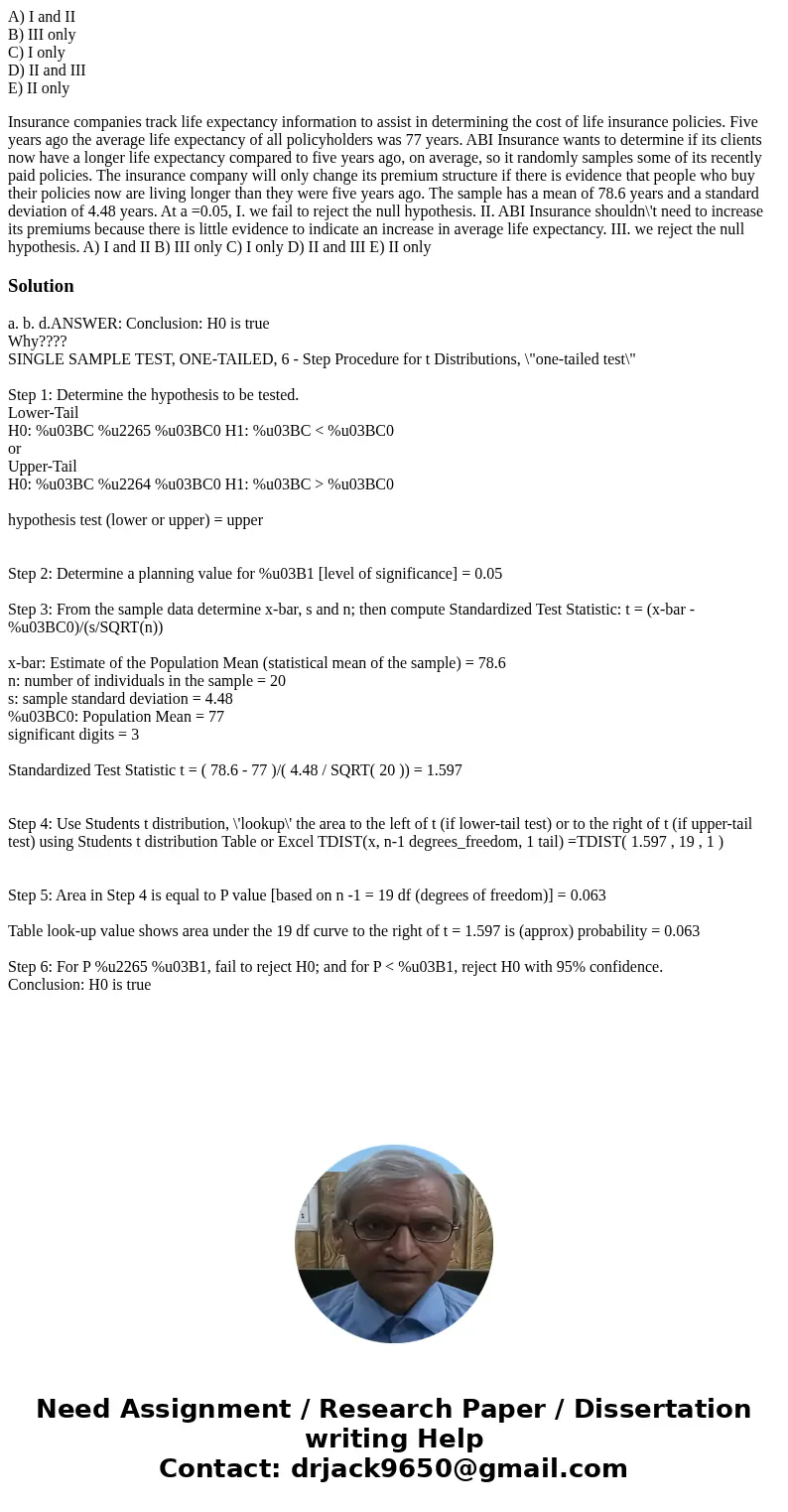A I and II B III only C I only D II and III E II only Insura
A) I and II
B) III only
C) I only
D) II and III
E) II only
Solution
a. b. d.ANSWER: Conclusion: H0 is true
Why????
SINGLE SAMPLE TEST, ONE-TAILED, 6 - Step Procedure for t Distributions, \"one-tailed test\"
Step 1: Determine the hypothesis to be tested.
Lower-Tail
H0: %u03BC %u2265 %u03BC0 H1: %u03BC < %u03BC0
or
Upper-Tail
H0: %u03BC %u2264 %u03BC0 H1: %u03BC > %u03BC0
hypothesis test (lower or upper) = upper
Step 2: Determine a planning value for %u03B1 [level of significance] = 0.05
Step 3: From the sample data determine x-bar, s and n; then compute Standardized Test Statistic: t = (x-bar - %u03BC0)/(s/SQRT(n))
x-bar: Estimate of the Population Mean (statistical mean of the sample) = 78.6
n: number of individuals in the sample = 20
s: sample standard deviation = 4.48
%u03BC0: Population Mean = 77
significant digits = 3
Standardized Test Statistic t = ( 78.6 - 77 )/( 4.48 / SQRT( 20 )) = 1.597
Step 4: Use Students t distribution, \'lookup\' the area to the left of t (if lower-tail test) or to the right of t (if upper-tail test) using Students t distribution Table or Excel TDIST(x, n-1 degrees_freedom, 1 tail) =TDIST( 1.597 , 19 , 1 )
Step 5: Area in Step 4 is equal to P value [based on n -1 = 19 df (degrees of freedom)] = 0.063
Table look-up value shows area under the 19 df curve to the right of t = 1.597 is (approx) probability = 0.063
Step 6: For P %u2265 %u03B1, fail to reject H0; and for P < %u03B1, reject H0 with 95% confidence.
Conclusion: H0 is true

 Homework Sourse
Homework Sourse